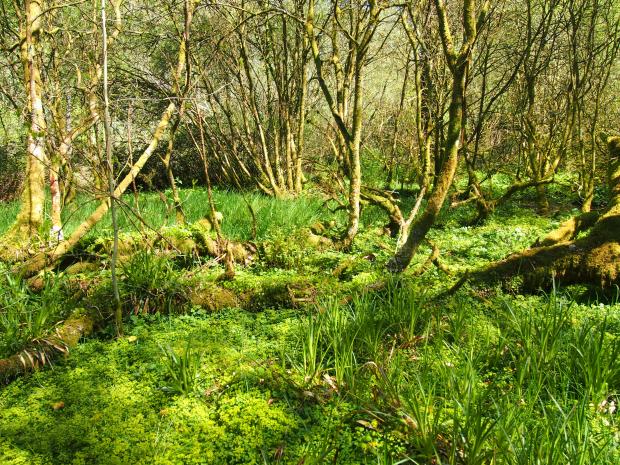
The majority of the woodland on this site is semi-natural, although some felling of native trees and replanting with non-native species has occurred in the past. The semi-natural wood exhibits a markedly calcifugous character, with a wide diversity in structure and plant communities present.
The site is notable for its rich bryophyte and epiphytic lichen community, and is the only known Northern Ireland location for the moss Fissidens celticus.
The woodland covers both flanks and floor of the deep Burntollet Glen, along a length of nearly 1km. In addition to woodland, the site contains a range of physical features including a high waterfall The Ness, a deep gorge, cliffs, rock faces and scattered boulder scree, all of which contribute to the overall diversity of the site. The canopy on the free-draining slopes is dominated by sessile oak but this is occasionally replaced by planted beech. The understorey is mostly formed by hazel with holly, downy birch and rowan the common associates.
Related articles
- ASSI Guidance for Public Bodies/Competent Authorities
- Coastal Areas of Special Scientific Interest
- Conservation Management Plans (CMPs)
- European Marine Sites - Marine Special Areas of Conservation and Special Protection Areas
- Introduction to Conservation Management Plans (CMPs) for Northern Ireland’s Special Areas of Conservation
- Marine Conservation Zones
- Marine Protected Areas
- Marine Ramsar sites
- Portrush Coastal Zone
- Special Areas of Conservation
- Special Areas of Conservation for Harbour porpoise
- Special Protection Areas
